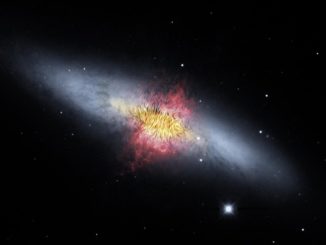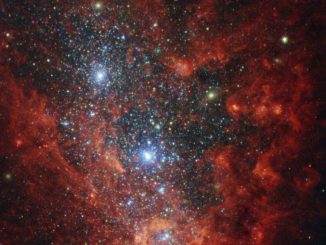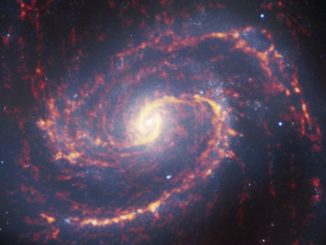The starburst galaxy M94, also known as NGC 4736, resides in the northern constellation Canes Venatici at a distance of about 16 million light years. The galaxy has a diameter of about 33,000 light years and is a member of the Virgo cluster, receding from the Milky way at about 337 kilometres (220 miles) per second.
M94 has two distinct ring structures: an inner “starburst” ring, seen here in a closeup by the Hubble Space Telescope in 2015, and a fainter outer ring with regions of moderate star formation. The bluish inner ring features countless hot, young stars forming in the wake of a pressure wave seeping outward from the core. The pressure wave compresses gas and dust as it passes, causing the material to collapse into denser clouds that eventually reach temperatures triggering nuclear fusion and star birth. M94’s ring structure could be the result of a merger with another galaxy or gravitational interactions with other members of the Virgo cluster.




